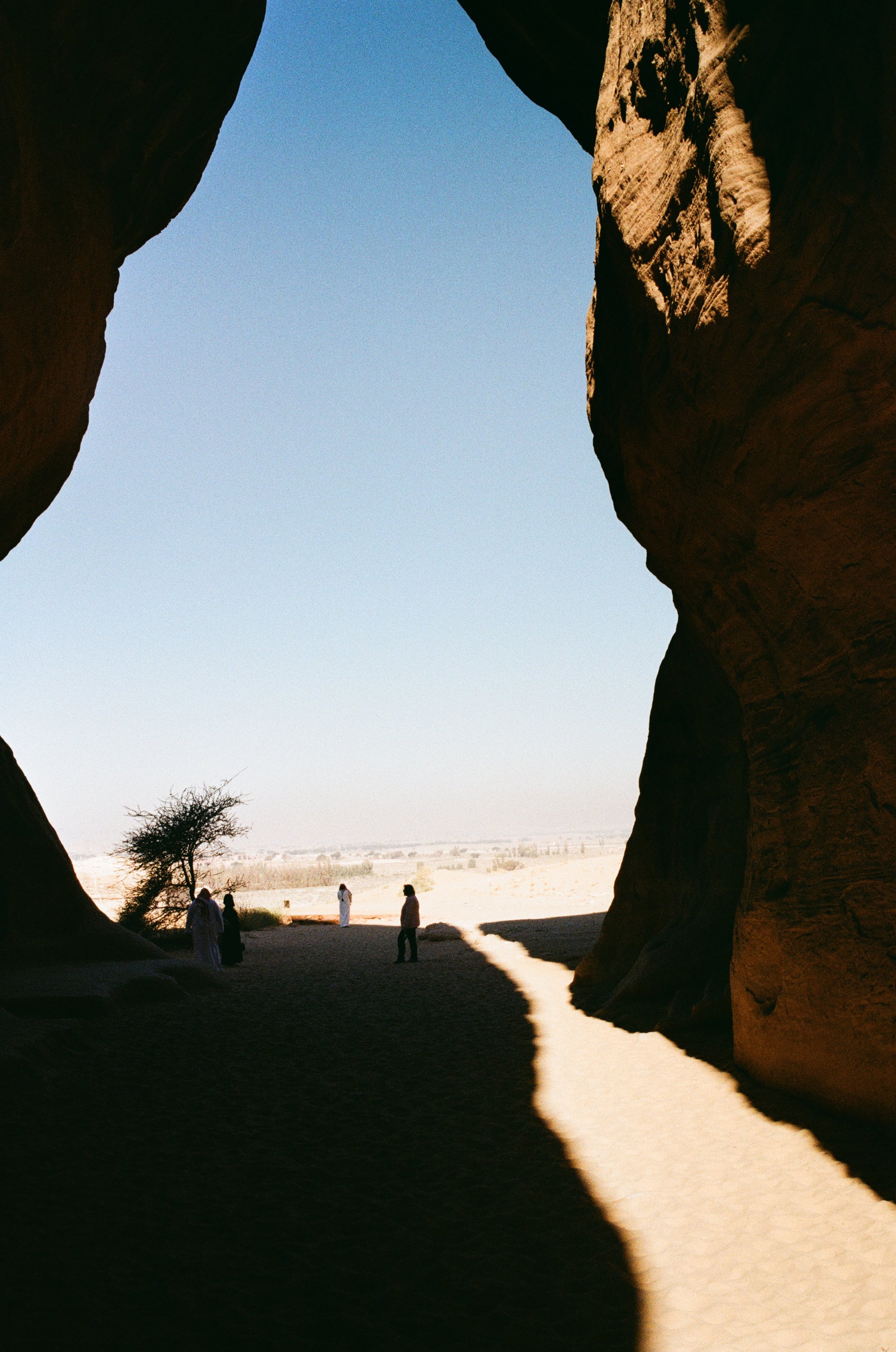A hidden gem - the Nabatean remains of Hegra in Saudi Arabia
Left untouched for more than 2000 years, the carved sandstone tombs of Hegra are breathtaking remnants of the life of the mysterious and once prosperous Nabatean civilisation.
Upon setting eyes on the unbelievable archeological site of Hegra, one can only wonder who these giants scultpured sandstone structures belonged to and how they came to emerge in the middle of the Saudi Arabian desert.
More than 200,000 years ago, the presence of human life could be traced in the Medina province of northwestern Saudi Arabia. During the Paleolithic period, nomadic hunter-gathers turned to farming and settled in the region thanks to the abundant natural ressources provided by the Alula oasis. By harnessing water, growing crops and herding livestock the area enabled other civilisations to flourish and develop. In the 6th century B.C the Dadan and Lihyan kingdoms arose - remnants of their writing and rock-art can still be found on site. They were followed by the rise and fall of the Nabateans - a nomadic tribe of merchants turned expert traders thanks to their geographical presence on the spice and incense trade road from Yemen across the Arabian Peninsula to the Mediterranean.
Thanks to the trade of incense and myrrh and the taxation of caravans passing through Hegra, the Nabateans prospered immensely and this is how the 111 wondrous carved sandstone tombs around the city appeared. With the rise of the Roman Empire, Hegra was soon annexed and lost its position of authority with the development of maritime shipments over land routes.
Sapphire blue skies, ruby coloured sandstone and emerald green palm groves - the oasis of Alula was a huge source of inspiration for LWJ’s a precious winter garden curation.
Extraordinary rock outcrop with profile of a human face on site in Hegra.
Unlike the Egyptians, the Jews or the Babylonians, the Nabateans did not write their history on walls, or scrolls or clay tablets but left awe-inspiring monuments for us to admire today. The Nabateans’ capital was Petra in Jordan which was first “discovered” in 1812 by Swiss explorer Johann Ludwig Burckhardt.
Hegra on the other hand was kept secret from tourists for more than 2000 years even after it became the first Unesco World Heritage in Saudi Arabia in 2008. After being kept undisturbed for years, the ancient city opened to the general public in 2019 when Crown Prince Mohammed bin Salman launched tourist visas for the first time as part of his new roadmap entitled Vision 2030 with the aim to diversify its economy from oil earnings and develop into a global trade and tourist hub connecting Africa, Europe and Asia.
Stroll through the charming streets of Alula old town where pilgrims, travellers and permanent settlers gathered through the ages.
Alula oasis counts more than 2.3 million date palm trees - with it’s abundant ressources, it’s no wonder the first hunter gatherers decided to settle in the region more than 200 000 years ago.

































